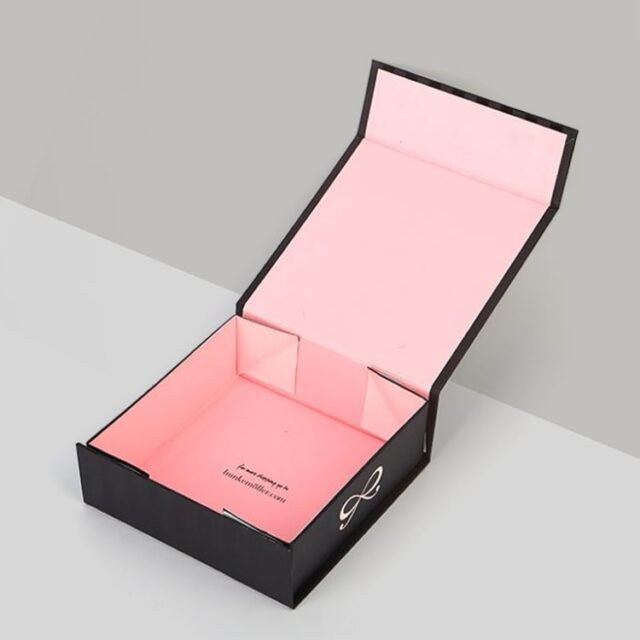I. Introduction: The Growing Imperative for Sustainable Packaging
The global landscape is undergoing a profound transformation, driven by an escalating awareness of environmental challenges. Consumers, businesses, and governments alike are recognizing the urgent need to adopt more sustainable practices across all industries, and packaging stands at the forefront of this shift. The increasing concerns over climate change, plastic pollution, and the depletion of natural resources have propelled custom packaging from a niche concept to a mainstream imperative. Sustainable packaging, at its core, refers to packaging that minimizes environmental impact throughout its entire lifecycle—from the responsible sourcing of raw materials, through manufacturing and transportation, to its eventual disposal or reuse. This holistic approach emphasizes reducing waste, conserving energy, and utilizing renewable or recycled resources. It’s about designing packaging that is effective in protecting its contents while simultaneously being benign to the planet.
In today’s competitive market, packaging is far more than just a protective casing for products. It serves as a powerful extension of a brand’s identity, a key influencer in consumer purchasing decisions, and a clear indicator of a company’s commitment to corporate social responsibility. A brand’s packaging choices can significantly shape public perception, influencing everything from perceived product quality to ethical standing. As consumers become increasingly discerning about the environmental footprint of the products they buy, companies are compelled to rethink their packaging strategies. This article will delve into two pivotal trends shaping the future of the packaging industry: the rise of reusable and recyclable solutions. These innovations represent a significant stride towards a more sustainable future, offering both environmental benefits and strategic advantages for businesses embracing green packaging innovations.
II. Reusable Packaging: A Cornerstone of the Circular Economy
Reusable packaging represents a fundamental shift away from the linear “take-make-dispose” model towards a more sustainable “circular economy.” Unlike single-use packaging, which is discarded after one use, reusable packaging is designed to be utilized multiple times for the same or a similar purpose, significantly extending its lifespan. This concept is central to minimizing waste and maximizing resource efficiency. By keeping materials in circulation for as long as possible, reusable solutions drastically reduce the demand for virgin raw materials and the energy associated with their extraction and processing. This approach contributes directly to packaging waste reduction, a critical goal for environmental conservation. The environmental benefits are substantial, including a lower carbon footprint over the product’s lifecycle, reduced landfill burden, and decreased pollution. Economically, while initial investments in durable reusable packaging might be higher, businesses often realize long-term cost savings through reduced material consumption, lower waste disposal fees, and optimized logistics.
Across various sectors, innovative applications of reusable packaging are emerging. In retail, this includes refillable containers for household goods, personal care products, and even food items, where consumers bring their own containers or return empty ones for refilling. For business-to-business operations, robust, standardized crates, pallets, and totes are being designed for repeated use in closed-loop supply chains, streamlining logistics and enhancing efficiency. Brands are increasingly implementing reusable packaging solutions not only for their environmental credentials but also to meet the growing consumer demand for sustainable packaging. This trend is driven by a desire for convenience, cost-effectiveness, and a reduced environmental impact. A crucial factor underpinning the success of reusable packaging is durability. For packaging to truly be reusable, it must be inherently robust and capable of withstanding numerous cycles of use, cleaning, and transportation without compromising its structural integrity or aesthetic appeal. This ensures longevity and maintains the premium presentation expected by consumers, making the initial investment worthwhile.
III. Recyclable Packaging: Closing the Loop on Waste
Recyclable packaging plays an equally vital role in closing the loop on waste, transforming discarded materials into new resources. Understanding what makes packaging “recyclable” is crucial; it means the material can be collected, processed, and converted into new products. However, effective recyclability depends not only on the material itself but also on the availability of appropriate recycling infrastructure and active consumer participation in sorting and collection. Addressing common misconceptions, not all materials labeled as “recyclable” are universally accepted in all recycling programs, highlighting the need for clear labeling and local guidelines. The advantages of using recycled content packaging are numerous, primarily reducing the reliance on virgin resources, conserving energy, and lowering greenhouse gas emissions associated with manufacturing from scratch.
Key recyclable materials include paperboard, corrugated cardboard, glass, and certain types of plastics. Each offers distinct advantages in terms of protective qualities, versatility, and recyclability. For instance, paper-based materials are widely accepted in recycling streams and can often be recycled multiple times. Designing for optimal recyclability is paramount. This involves thoughtful choices in material selection, minimizing the use of mixed materials that are difficult to separate, and ensuring clear, unambiguous labeling to guide consumers. Packaging designers are increasingly focusing on mono-material solutions or easily separable components to facilitate the recycling process, thereby contributing to a lower environmental impact of packaging. The inherent recyclability of paper and rigid board materials makes them a preferred choice for many brands committed to sustainability. These materials are generally well-integrated into existing recycling infrastructures, making them an accessible and effective component of a more sustainable packaging ecosystem. By prioritizing materials that can be easily reprocessed, businesses contribute significantly to a circular economy and reduce their overall environmental footprint.
IV. Navigating the Challenges and Opportunities in Eco-Friendly Packaging Adoption
The journey towards widespread adoption of eco-friendly packaging is not without its challenges, yet these hurdles often present significant opportunities for innovation and market leadership. One primary concern for businesses is the initial cost associated with transitioning to new, sustainable materials or investing in the infrastructure required for reusable packaging systems. Implementing reverse logistics for collecting and cleaning reusable containers, for example, can be complex and require substantial upfront planning and investment. Furthermore, the global landscape of recycling infrastructure varies dramatically, meaning what is recyclable in one region may not be in another, adding a layer of complexity for international brands. These factors necessitate careful strategic planning and often a phased approach to implementation.
However, these challenges simultaneously create immense opportunities for brand innovation and differentiation. Companies that proactively embrace packaging innovation and invest in sustainable solutions can distinguish themselves in a crowded market. This commitment resonates deeply with environmentally conscious consumers, fostering stronger brand loyalty and a positive public image. Brands that lead the way in sustainable packaging often become pioneers, setting new industry standards and attracting a growing segment of the market that prioritizes ecological responsibility. Beyond the direct environmental benefits, there is a clear opportunity to build deeper connections with consumers through transparency and shared values. This also underscores the critical role of consumer education and engagement. For sustainable packaging initiatives to be truly effective, consumers must be empowered with clear information on how to properly dispose of, reuse, or recycle packaging. Clear labeling, educational campaigns, and accessible collection points are vital to maximizing the positive impact of sustainable packaging. Looking ahead, the regulatory landscape is continually evolving, with governments worldwide introducing stricter policies and incentives for sustainable packaging. This creates both a compliance requirement and a fertile ground for new market opportunities for businesses that are agile and forward-thinking in their approach to green packaging.
V. The Future is Now: How Smart Design Drives Sustainable Solutions
The evolution of modern packaging extends far beyond simply being recyclable or reusable. Today’s most impactful solutions are characterized by thoughtful design that integrates intelligence and adaptability, enhancing both functionality and sustainability. This holistic approach considers the entire lifecycle of the package, from its structural integrity to its end-of-life options. The strategic advantage of adaptable packaging, such as those designed to be easily assembled, disassembled, and stored flat, offers profound benefits. Such designs significantly optimize logistics, reducing shipping volumes and associated carbon emissions. They also maximize storage space, both in warehouses and for consumers, contributing to a lower overall carbon footprint. This inherent adaptability is a hallmark of truly innovative and eco-friendly packaging, demonstrating a forward-thinking approach to resource management.
Furthermore, versatile packaging solutions can meet the diverse needs of various product categories without compromising on a premium feel or strong brand presence. This flexibility allows brands to maintain consistency in their commitment to sustainability across their product lines. For businesses seeking to align with these critical sustainable packaging trends and elevate their brand image, Custom Collapsible Rigid Boxes offer an unparalleled solution. These innovative boxes combine the luxurious feel and superior protection of traditional rigid packaging with the remarkable benefits of flat-pack storage and shipping. Their robust construction ensures durability for multiple uses, making them ideal for reusable packaging solutions, while the high-quality, often recycled, paperboard materials ensure they are readily recyclable packaging. Choosing Custom Collapsible Rigid Boxes means investing in a packaging solution that not only reduces your environmental impact of packaging but also delivers a premium unboxing experience, reflecting your brand’s commitment to both quality and sustainability. Discover how Custom Collapsible Rigid Boxes can transform your product’s presentation and logistics, demonstrating your dedication to a greener future.








Hi, I do believe this is an excellent web site. I stumbledupon it 😉 I will revisit
yet again since I saved as a favorite it. Money and freedom is the greatest way to change, may you be
rich and continue to help others.